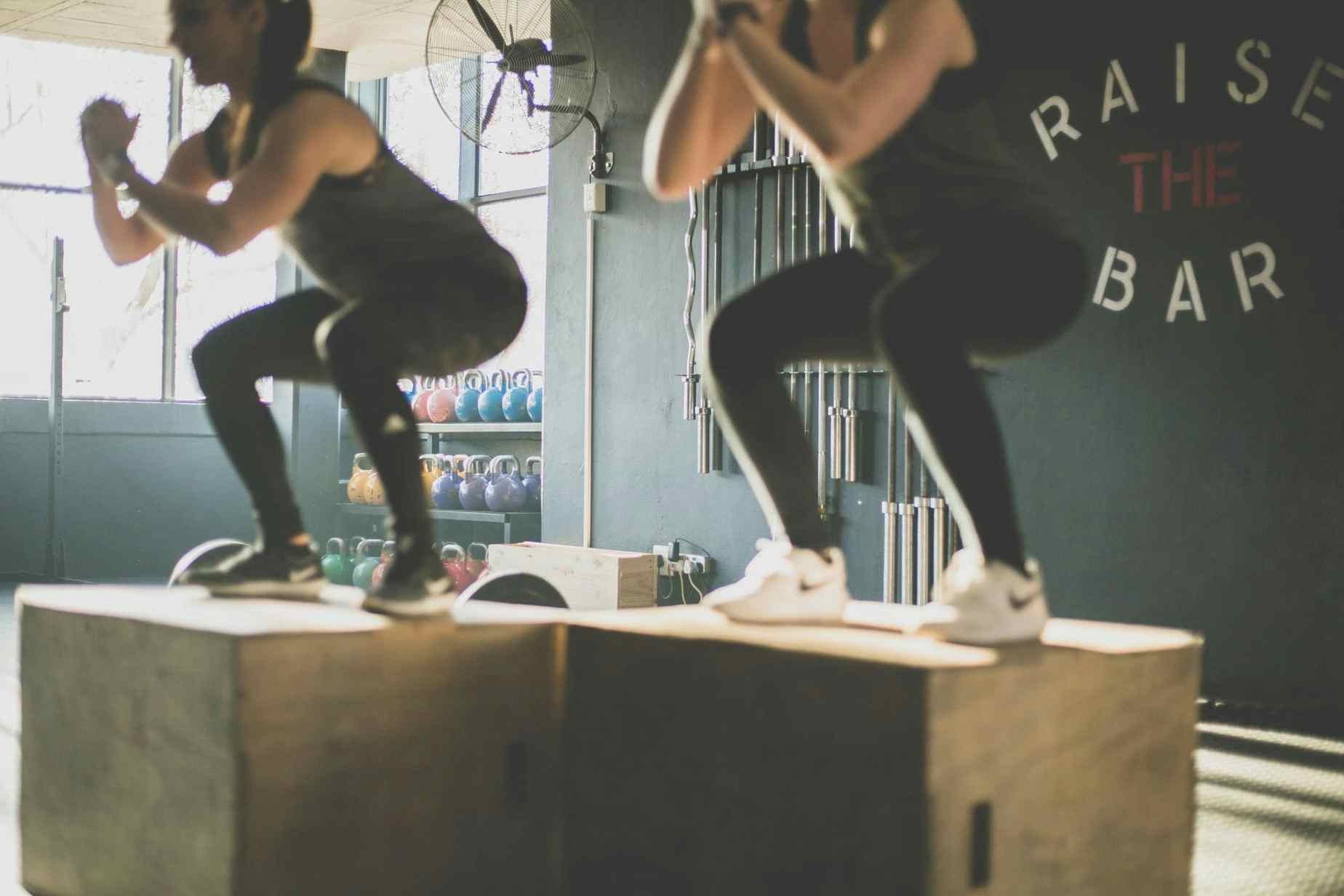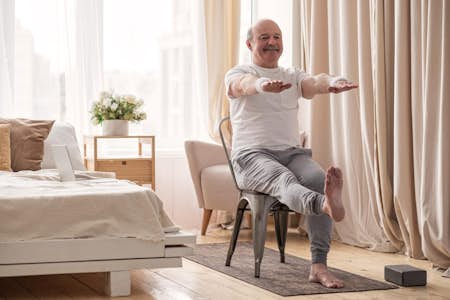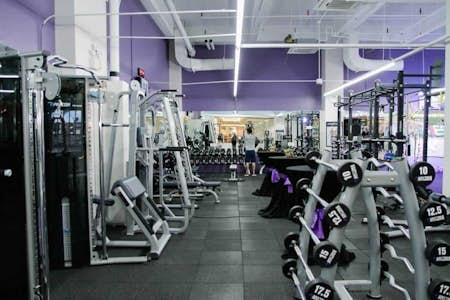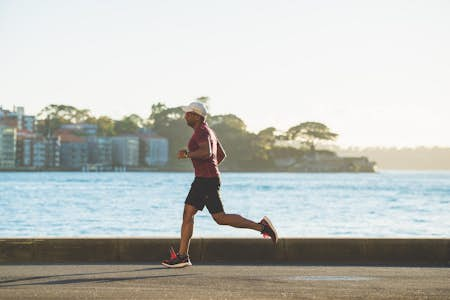Agility training is an underrated form of exercise for older people. The idea that over 50s may need to change direction at speed is often scoffed at. Still, agility training has many real-world uses for people of any age.
Ready to transform your life? Whether you're looking for a new pair of running shoes or some shiny home gym equipment, you can find everything you need to fuel your fitness journey with our partner brands.
What is agility?
Agility is often associated with drills such as running through weave poles and turning around at high speeds. But this is just one example of an agility drill. The purpose of agility training is to get you moving quickly and efficiently.
An agile person will have good coordination, balance, speed, and strength. They will also have good dynamic and static balance.
- Dynamic balance is the ability to stay balanced while moving.
- Static balance is the ability to stay balanced while standing still.
Why is agility training important?
As you can imagine, improving these skills is highly beneficial. Improved balance while moving means less risk of falling; improved coordination is crucial as coordination declines as we age.
Speed and strength are also critical, as they give us more independence in later life. In addition, having the ability to perform a change of direction at speed is excellent for avoiding dangerous situations.
Improved agility gives you a better chance of competing in competitive sports, too. Older people are frequently encouraged to participate in group sports, not just bowls and golf.
Walking football, touch rugby, and hybrid tennis sports such as pickleball have all been developed with an eye on capturing an older audience and increasing activity levels in seniors.
A lot of agility training is fun too. Agility classes are pretty rare, but finding an exercise class that offers agility ladders, cone drills, and box drills is relatively easy.
Emotional agility and cognitive agility training are also highly effective. Training your brain to respond to situations fast can help you handle stressful situations.
Katie Holmes from Run Young 50 told us: "It’s important to think about fitness holistically as we age. It’s not just about endurance or cardiovascular fitness, it’s also about having a good range of movement, overall body strength and flexibility. All these things will be important to remaining mobile and independent in our very old age. If we focus on one activity such as running or cycling, we can feel strong and fit but we are repeating one movement pattern and exercising some muscles a lot and others very little."
What are the benefits of agility training?
- You will be able to perform better in sports
- Lower risk of injury while playing sports
- You are less likely to get injured due to falling
- Your hand-eye coordination will improve
- Your balance will improve
- Your movements will be more efficient
- You will have greater independence as you age
Can agility be trained?
Obviously, some people have a genetic advantage, making them more agile than others. For example, a professional footballer will be naturally more agile than most people. Still, agility can definitely be improved with training, no matter your age.
In fact, agility is one of the most straightforward skills to improve with training. Most school PE lessons improve agility, even if it isn't always apparent. Running around cones, weaving in and out of poles, or even playing games like tag all help.
All of these teach people how to be more agile and mobile. They focus on improving foot speed and change of direction. Add a football, and you've just described 90% of the drills in a coaching session. Dog agility training is very similar because it is all about the abovementioned skills.
According to Science for Sport, three areas contribute to training agility successfully:
- Physical - Strength, power, speed
- Technical - Posture, ability, hand-eye coordination
- Cognitive - Ability to respond to new information fast, perception, anticipation
There are training methods for all three areas. Physical training would be going to the gym and building your strength and power up. Technical training would be agility drills (see below) specific to your sport.
Cognitive training comes in many forms, but in this context, it usually comes from knowing your sport well. For example, if you are playing a team sport such as walking football, it is knowing how to scan the pitch for an opponent as soon as you get the ball to move away from them at pace.
What exercises improve agility?
Before performing any agility training program, you want to ensure that you have a full warm-up. This can involve bodyweight exercises and low impact cardio like shuttle runs. Here are some agility exercise drills that are used often in coaching:
- Cone drills
- Agility ladder
- Agility hurdles
- Lateral running
- Plyometric jumps
Now, many of these are not necessarily suitable for older people. For example, agility hurdles are mini-hurdles that you can jump over at speed. Furthermore, plyometric exercises (jumping and other explosive movements) can cause injury in untrained individuals.
But cone drills, the agility ladder, and lateral running are great exercises for seniors.
An example of a cone drill would be the compass drill; this next section will walk you through how to perform the compass drill as well as an agility ladder drill that involves lateral running.
Compass drill
Set up five cones in the shape of a compass, one at North, one at South, one at East, one at West, and one in the centre. Starting in the centre, run to the East cone and back to the middle cone, then to the South cone and back, repeating the process at each station and always returning to the starting cone.
Once you have finished, that is one training set. You can then perform 3-4 training sets for a full agility workout. As you get better, you will be able to perform this faster and faster.
Agility ladder drill
This drill is very popular in coaching and is easy to set up. All you need is an agility ladder laid out on the floor. Your starting position is beside it, facing forwards. You will then run laterally across the ladder with high knees, landing your feet inside the ladder without touching it. Again, the more you practice, the faster you can go.
High knees are crucial for this. Start with your left foot, then raise it in the air as you bring your right foot into the ladder, then left foot into the next space, and then right. Repeating as you travel across the ladder. Perform 3-4 repetitions of this drill for a superb agility workout.
Using agility training to stay agile in later life
The best agility exercises for seniors are cone drills. They are simple to set up and can be performed at many different speeds. Sure, walking would not provide much of a challenge, but jogging would be a great introduction to agility.
Cone drills are great for any team sports, but they are also great for badminton, tennis, squash, and they can also help you to deal with everyday hazards such as walking on busy streets or crossing roads. It may sound silly now, but improving your coordination and agility in your 60s, 70s, and 80s will be highly beneficial as you head towards your 90s.
If you’re experiencing pain or exhibiting other symptoms during or after exercise, you should stop what you’re doing and seek medical attention.
With Scan.com, you can take action quickly and put your mind at ease.
Choose from 10 scan types at over 250 clinics nationwide and get the answers you need so you can continue looking after your health.
Visit Scan.com now to learn how it works and book your scan.









